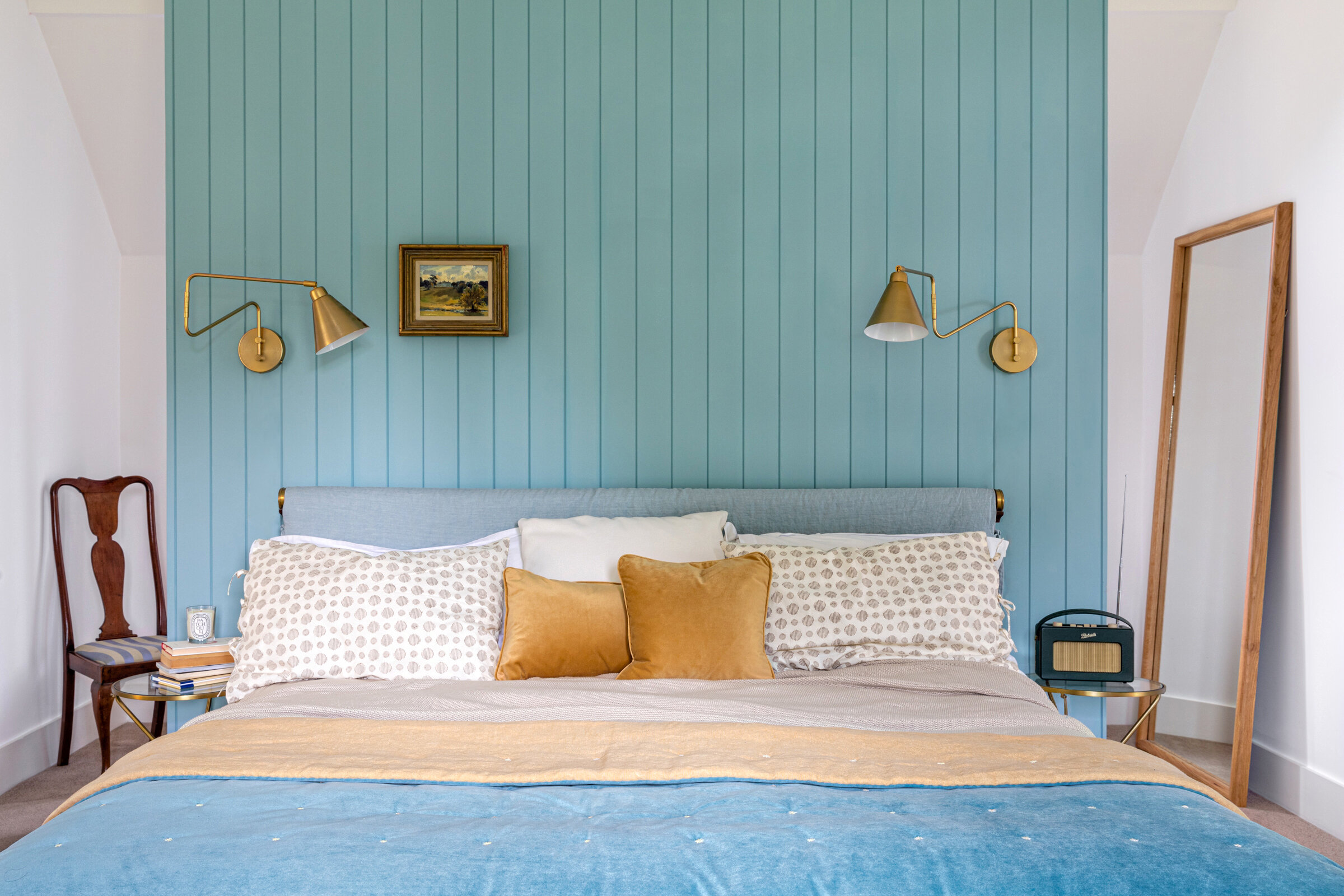Environmentally Friendly Paints
Paint plays a crucial role in the design of an interior space. If you are not a fan of wallpaper, then paint will most likely be the primary choice for covering 95% of your walls, ceiling, skirting, picture rails, door frames, and windowsills. When advising our clients on paint options, we prioritise sustainability and the well-being of the interior environment. In the following sections, we will share our preferred sustainable and eco-friendly paint recommendations that we often utilise in our projects.
The Significance of Sustainability in the Interiors Industry
The construction industry is a major contributor to pollution globally. However, there is a way to positively impact the environment by selecting environmentally-friendly materials for renovation projects. As designers, we have a responsibility to the planet and therefore, we urge our clients to opt for natural, renewable, or recycled materials. Our goal is to increase the demand for greener fixtures, finishes, and construction materials, which will ultimately compel the industry to invest in researching and developing even more sustainable options.
What Makes a Sustainable Paint?
Eco-friendly or sustainable paint should contain none or a small amount of chemicals that can harm us as well as the environment around us. If you are looking for an eco-friendly /sustainable paint the aspects you need to look out for include lower VOC content (Volatile Organic Compounds), the number of coats needed / best coverage, water based and free from solvents and other harmful chemicals. Some paints have even achieved accredited environmentally friendly status, such as the EU Ecolabel Accreditation.
What are VOC’s?
Chemicals known as VOCs (volatile organic compounds) can be found in both solvent-based and water-based paints and coatings. They are also present in products used for application, such as paint brush/roller cleaners and thinners. These VOCs are released into the air as the paint dries, posing a threat to both the environment and human health. Exposure to these compounds can lead to symptoms such as itchy eyes, nose, and throat, as well as respiratory issues. In addition, they can cause nausea and impact the central nervous system and other important organs, potentially even causing cancer.
Why choose water-based?
Water-based paint utilises water as its primary solvent and combines it with other ingredients. The benefits of opting for water-based paints include their biodegradability, lack of odor, and lower levels of VOCs and other harmful chemicals. When using this type of paint, it is possible to clean equipment like rollers and paint brushes with water instead of relying on chemical substances. However, it is important to note that even most water-based paints contain acrylic and can release environmentally harmful micro-plastics into the environment when washed down the sink.
In response to this issue, there are specialised paint brands that focus on creating plastic-free and completely natural paints, such as lime and graphene-based paints and clay paints. While these specialised paints do tend to be more expensive per liter compared to cheaper acrylic-based paints, some may consider the environmental benefits and elimination of harmful chemicals to be a worthwhile cost.
More coverage, less waste
Another crucial factor to consider when choosing a sustainable paint is the number of coats recommended, as more coats require more paint and can result in more waste from containers. Cheaper paint options often offer poorer coverage, making the cost difference between the "cheap" option and a higher quality alternative less significant than it may initially seem based on the price of a single can. Additionally, using more layers of paint can increase excess moisture and humidity near the walls, leading to potential issues such as peeling and bubbles and requiring more frequent sanding and repainting, which incurs additional costs, uses more resources, and may even cause damage to the walls.
Brands We Recommend
Made with mineral elements, including lime and graphene (from pure inert carbon), Graphenstone paints are an all-natural paint solution that gives durable results, delivering modern performance without compromise. It’s highly breathable and with a high pH, it actively prevents mould, fungi and other health-harming bacteria. The addition of Graphene, a 21st Century Nobel Prize winning technology, makes it more durable and offering Class 1 ‘wet-rub’ strength.
“Graphenstone is a high-quality paint - it contains graphene which makes it super strong and durable - it’s washable and they have a great colour selection and is entirely VOC free and plastic free! Their paint even absorbs CO2 from the atmosphere so it's truly an environmentally friendly choice! They can also colour-match to a RAL or NCS colour code or to a number of branded paint libraries.”
Pia Pelkonen
Earthborn paints were established in 2002 with the goal of creating a true eco alternative to conventional paints. The paint is water-based and can be purchased in six different finishes, including clay paint for interior walls and ceilings. The clay paint contains six ingredients: water, filler (various clays, chalk, kaolin,) binder (VAE emulsion,) thickener (methyl cellulose,) some colours contain pigments and 0.1% synthetic preservative (isothiazolinonp mixture.) This product is ‘virtually VOC free and was the first in the UK to be awarded the EU Ecolabel for Indoor Paints and Varnishes.
“For those people who love the chalkiness of Farrow and Ball but want an eco-friendly alternative, this paint is clay based, natural, breathable and very low VOC. The colours are all very earthy, so we love selection!”
Pia Pelkonen
Johnstone’s Trade, Ecological Solutions
Johnstone’s Trade paints are readily available from most builder’s merchants but the Ecological Solutions can be harder to source. The Ecological Solutions range has received the coveted EU Ecolabel accreditation, which is only awarded to the products which are kindest to the environment and have met stringent European level rules and follow wide consultation with experts an after verification that the product meets the rigorous environmental and performance standards.
“For those looking for the cost effective solution, Johnstone’s Trade paints have good coverage, are wipeable and also Low-VOC. However, these paints do contain petrochemicals and acrylic compounds.”
Pia Pelkonen
Victory Colours is an independent family business which has been in the Manufacturing and Decorating Industry for many years. Inspired by a need to change what goes in paint when they started to have their own families, their paints are vegan and free of a whole host of unpleasant toxins including - solvents, VOCs and phthalates, formaldehyde, heavy metals, and Alkylphenol Ethoxylates (APEO) amongst other things. They provide good coverage, durability and opacity and are washable, making it both an environmentally conscious and family-friendly option.
“Victory Colours offer a good range of paints for different uses as well as colour matching, so they can mix any colour from a RAL code to a fabric sample. ”
Pia Pelkonen
At Pia Design, we adhere to being as sustainable as we can to ensure that our clients not only love the homes, but also that we consider the health of their environment and the health of the planet. If you’d like to speak to an expert about how you could use your sustainable paints in a new interior scheme, please get in touch with Pia and her team.




